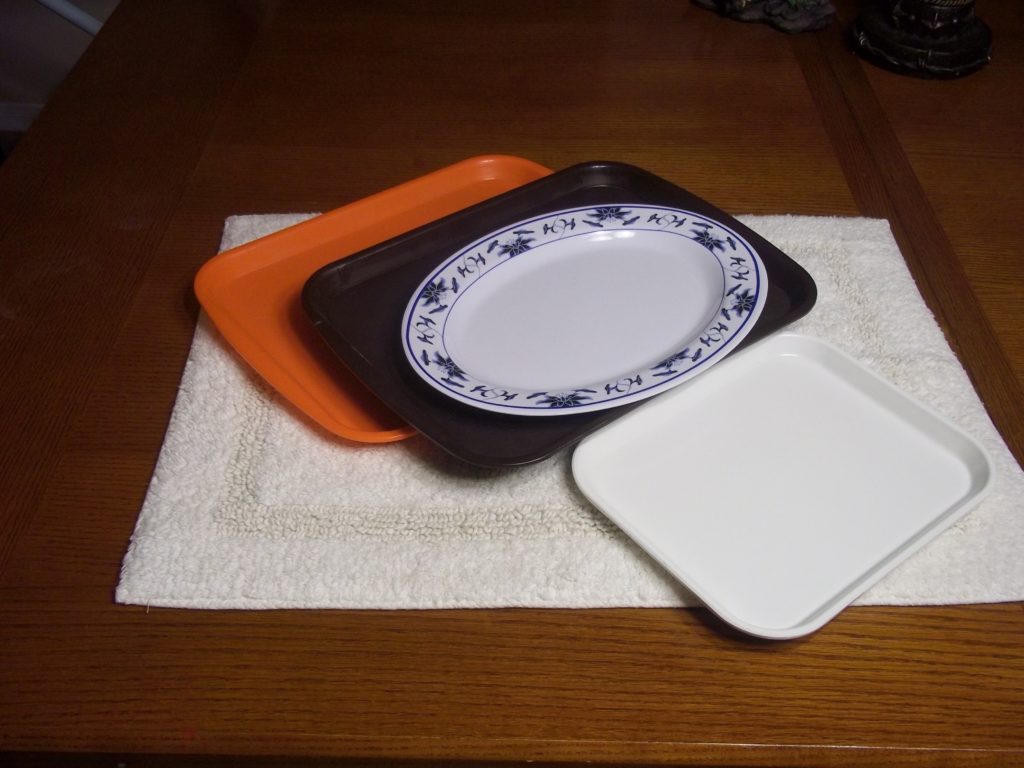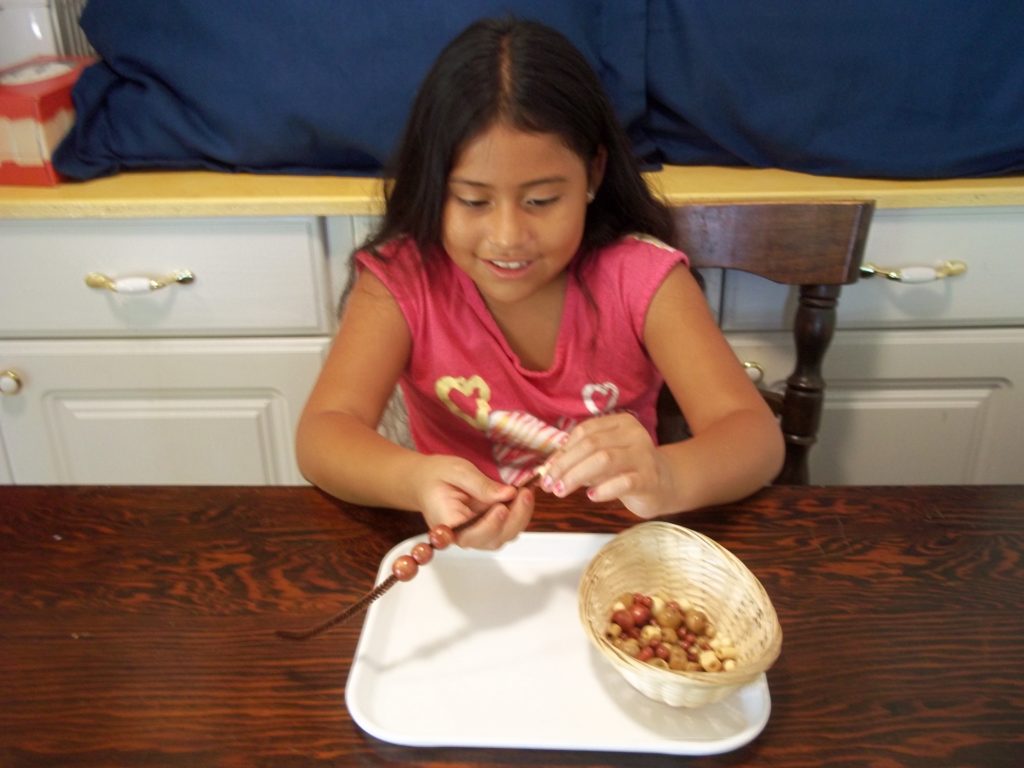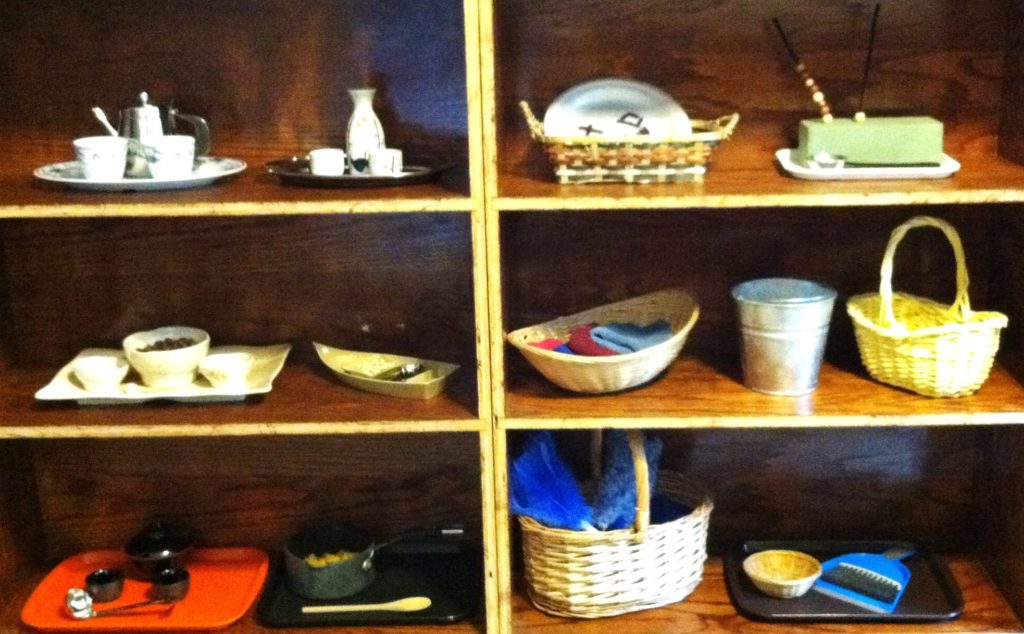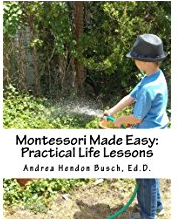
Presentation is an important part of the education experience in the Montessori Method. Each activity is presented prior to children using it. The correct way to use the materials is demonstrated to the children. Presentations can be made to an entire class of children at one time, to a small group of children, or to an individual child. The setting, particular Practical Life exercise, and circumstances determine which is best. Be sure to pay special attention to which hand is dominant for each child when providing the presentation of how to complete activities. If the child is left handed and the teacher is right handed, it is important to show the child how to complete the activity based on their left hand being the dominant hand.

In the beginning of the school year or home lessons, take the time to teach your children the basic skills. These basic skills include teaching your children how to roll up their mats and how to store them as a part of taking care of their environment. Other basic skills to include in early lessons are pushing their chairs in when getting up from a table, putting materials back in the correct place, cleaning up after themselves, as well as keeping their shelves and activities neat and clean.
Begin each new activity with a demonstration. When demonstrating an activity, the teacher should start by going to the shelf of materials and selecting the new material. Pick up and carry the materials to the mat or table where the activity will be used. While doing this, the teacher is demonstrating how the children are to handle and carry the materials. Set the activity down on the mat or table and go through the steps of how the materials should be used. As a general rule, all material processes should move from left to right. This is based on the process of preparing for reading where words are read from left to right.
Tell the children in detail such things as how to hold the materials, and exactly how to complete each step of the activity. You can have the children take a turn at trying out the activity, which is fun for them. New materials to work with are very exciting and everyone wants to give them a try. When you are presenting to a number of children, allowing each child an opportunity to try the new materials has significant benefits. This method will help the children learn how to use the activity, as well as, help them have a little more patience as they wait for their turn, once the materials are on the shelf.

Materials are set on the shelf and each Practical Life activity is unique. For example, there may be several pouring activities but each one would include different materials and even slightly different skills as demonstrated in the different pouring activities in Chapter 4 (in the full book Montessori Made Easy: Practical Life Lessons). Children at times will need to wait for someone to complete an activity and place it back on the shelf before they get a turn with that particular activity. This is important as it teaches patience. There should be plenty of materials to choose from but at times children will need to be patient before their favorite one is available.
Once the demonstration is complete, the teacher should put the activity back in its proper place on the shelf. Remind the children to put the set back where it came from. If you are using the materials in a more contemporary “learning center” based classroom, then the presentation should be completed at the center. The teacher should then reinforce that all of the materials for the center are to stay in that particular area and be kept together.
Many of the activities also include extensions. These are just ways to enhance the skills and interest by using different materials. Some of the extensions increase the skill levels by adding different work materials or methods, while other extensions simply add interest by utilizing different materials when practicing the same skills. As you further develop your Practical Life skills use these concepts to develop more activities and increase interest as your child practices skills using different materials and methods.
In the upcoming September posts, I will continue with the current series on Practical Life. I’ll share a number simple and easy Practical Life Activities to create, share, and enjoy. You can find all of the information on setting up your practical life lessons and many activities in the book: Montessori Made Easy: Practical Life Lessons available at Amazon.com. There is a direct link to the book on the “Dr. Andrea’s Books” page.




